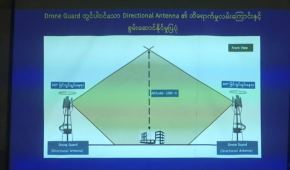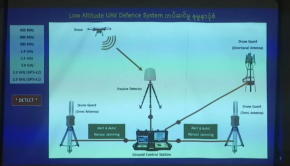This scenario is the preserve of a well funded military, able to equip soldiers with a digital network, manportable APS, EW, BMS, etc etc. One possible future indeed but I don't see it as prevalent.
IMO, there will be a lot more emphasis on counter FPV/UAS operations that focus on hardkill or disrupting the kill chain. It's more cost effective and mission efficent to kill the FPVs before the lift-off. Any protection at unit level is akin to the last ditch defenses of a naval CIWS.
So you took Myanmar as your case for your entire reply? Okay, sorry it seems I misunderstood you.
For the second paragraph I think Lebanon is a great example. Terrorist army using a wide range of drones and other munitions, against a first rate military that utilizes a wide range of intelligence (including SIGINT) capabilities. The main hurdle is geography. Highly permissive for launching drones, and makes detection incredibly difficult. Hezbollah has its own air defenses but IAF drones are still flying over Lebanon, collecting data.
Yet it seems more drones are flying in than operators are killed.
I think we're in agreement that we need to be proactive about threats but also be ready to defeat them when they're in the air.
Given your above hi-tech scenario of APS, BMS etc, falling back to a home made counter drone drone systems as the answer is surprising. It's a big claim that you, have found that solution in your garage,
FPV drones are unique in that they're readily available for a low cost from the internet. What I talked about earlier is using force multipliers, which are a feature of proper armed forces but not exclusively. Armed drones can definitely be employed by low end armed forces, just not as reliably.
And if we're talking about Myanmar, then garage-level modifications are probably upper limit of sophistication.
If I was tasked with creating a drone that can shoot down other drones, then the first solution I'd go for is having a dedicated drone operator per sector flying a drone to which a folded net is attached.
As a follow on modification I'd set up my own controller and downselect my drone choice to something that has an API for its camera. Use that to give me an indication of flying objects. I'd have to look up to have good resolution against a sky background, but it's something.
Next after that I'd look for at least a modest comms modification to have a few different frequencies. It'll get more lossy, I'm dividing my transmission and reception power, but that's okay if I'm afraid of jammers.
Next I'd replace the net with something more quick and reliable like a buckshot. My main worry is I'll miss the drone and won't be able to catch up later, so this should make it more reliable. The drone will be single use, but it's probably worth it.
Some of the modifications I listed are things I saw the IDF using to down incendiary balloons in the Gaza envelope area. They're made in small workshops, with maybe 1-2 software devs behind it. Total work may be several months though.
While I talked about refinements, the basic capability of just manually guiding an FPV drone to ram another was demonstrated in Ukraine, as
@Feanor said.








